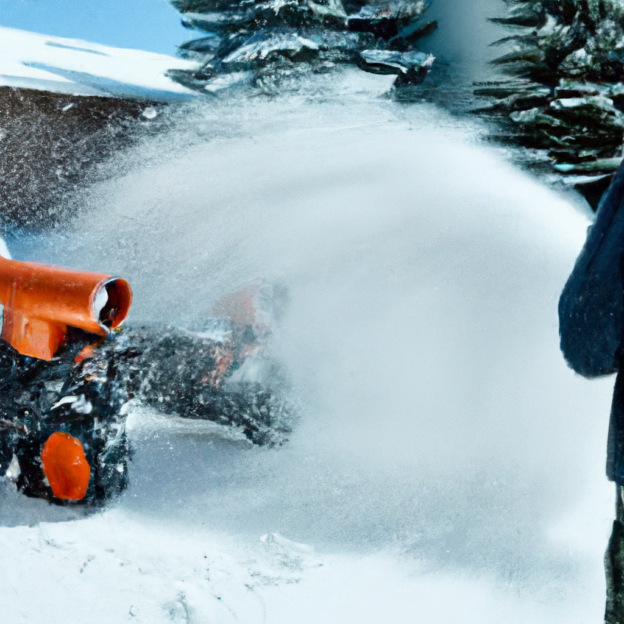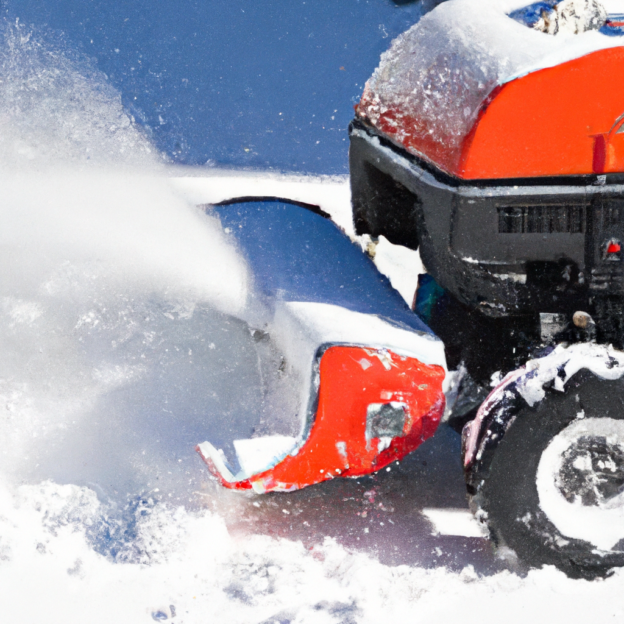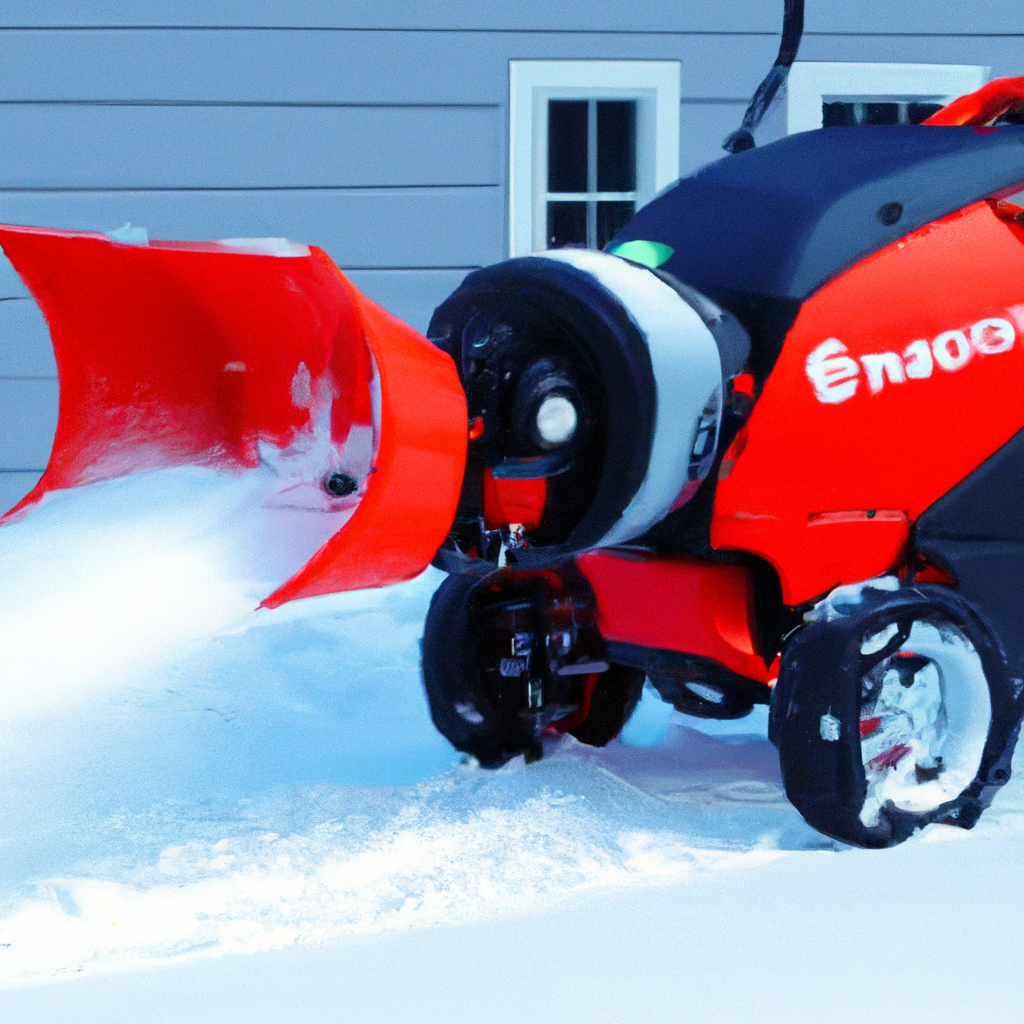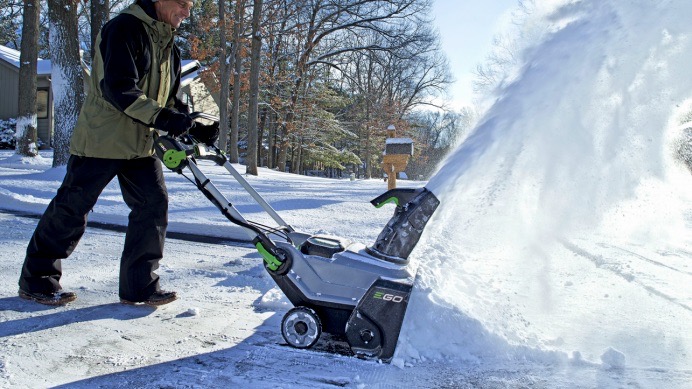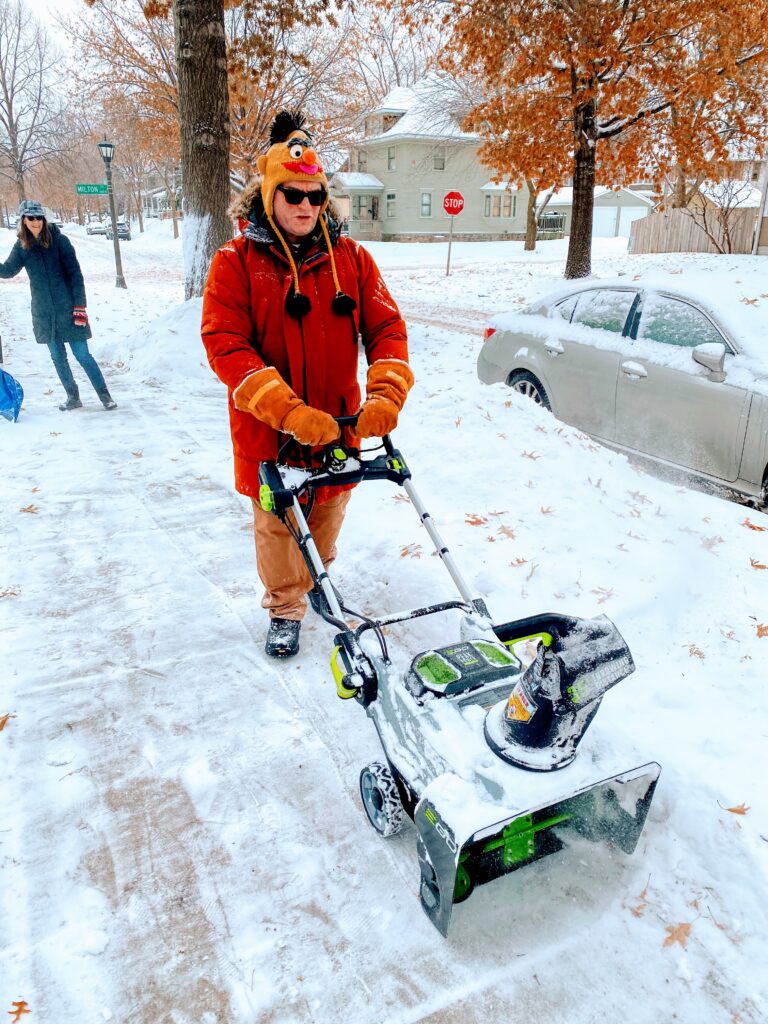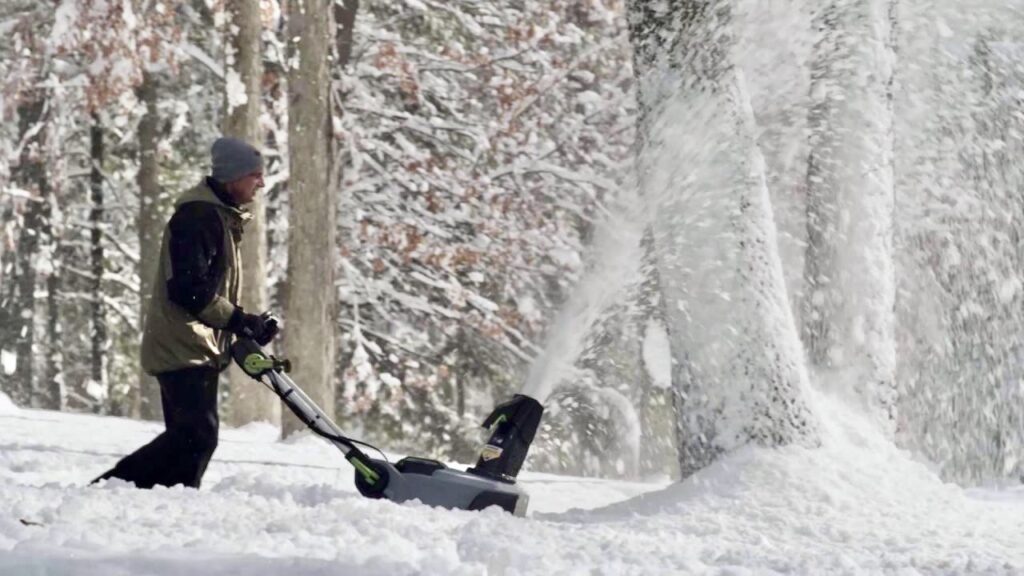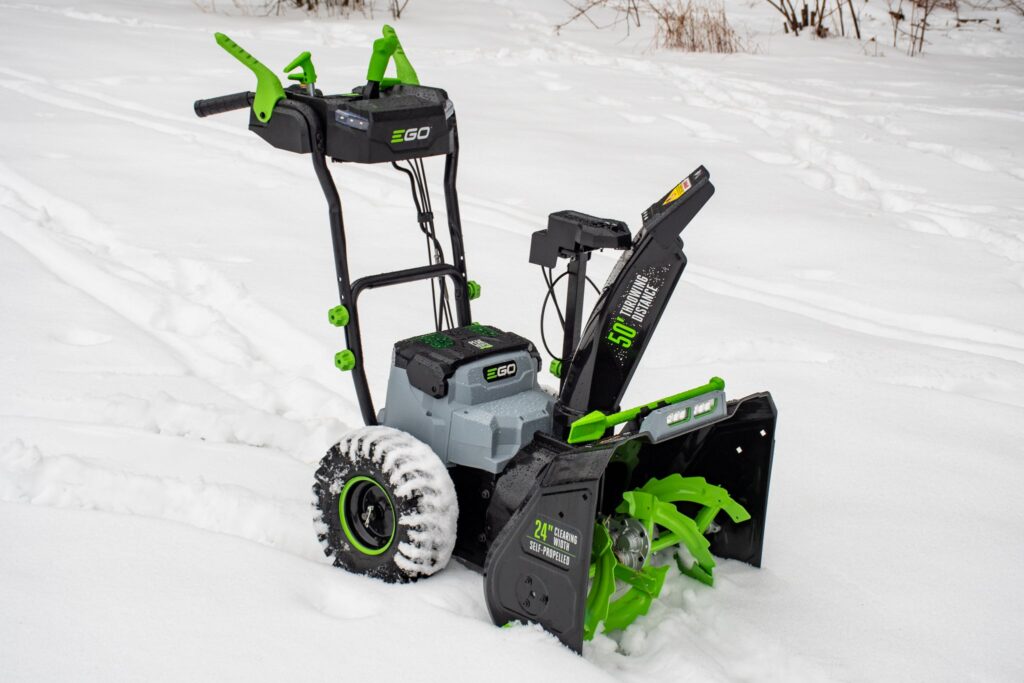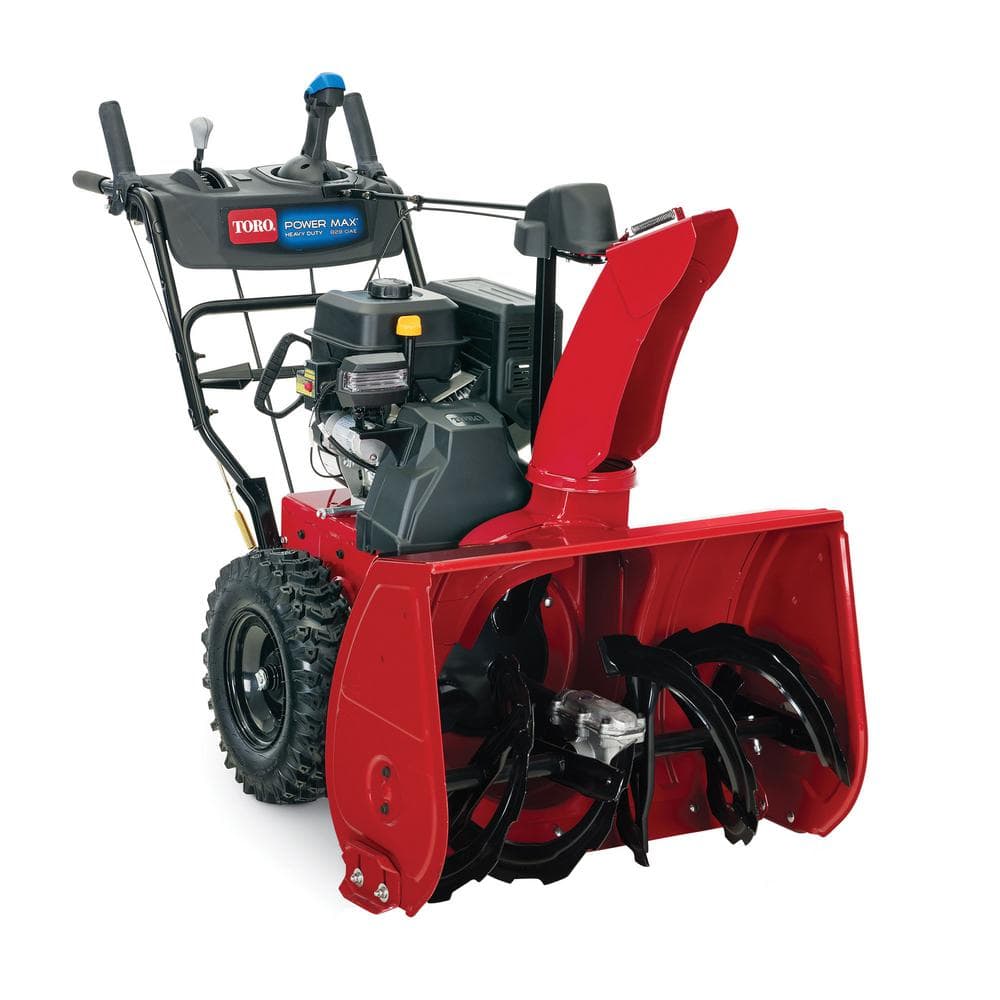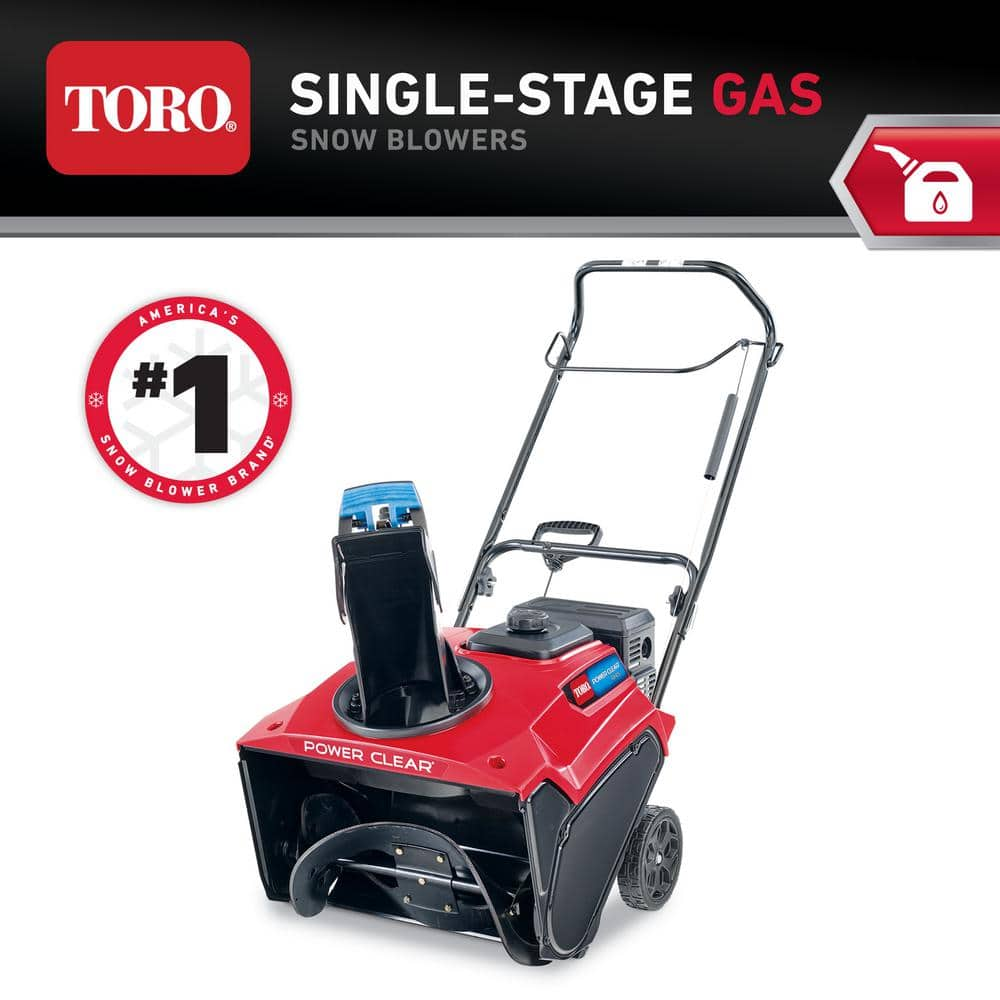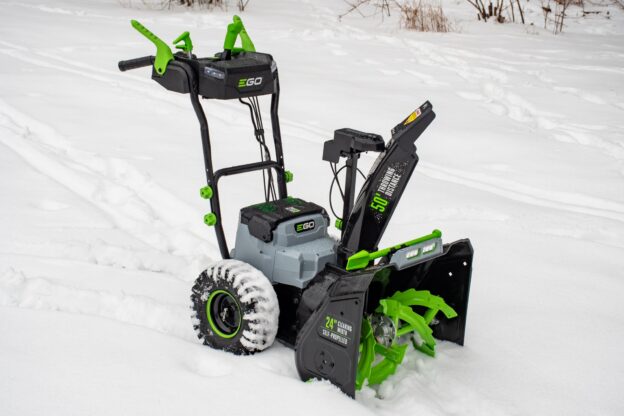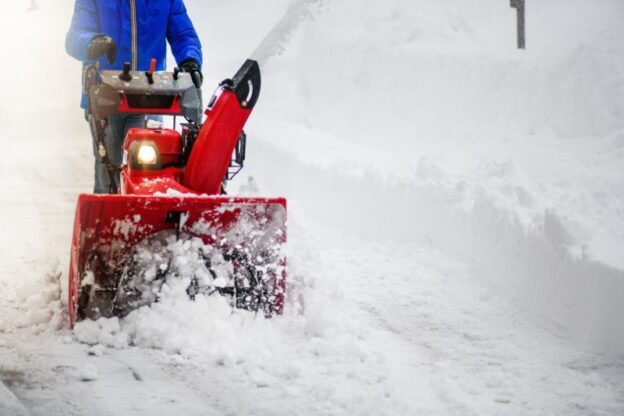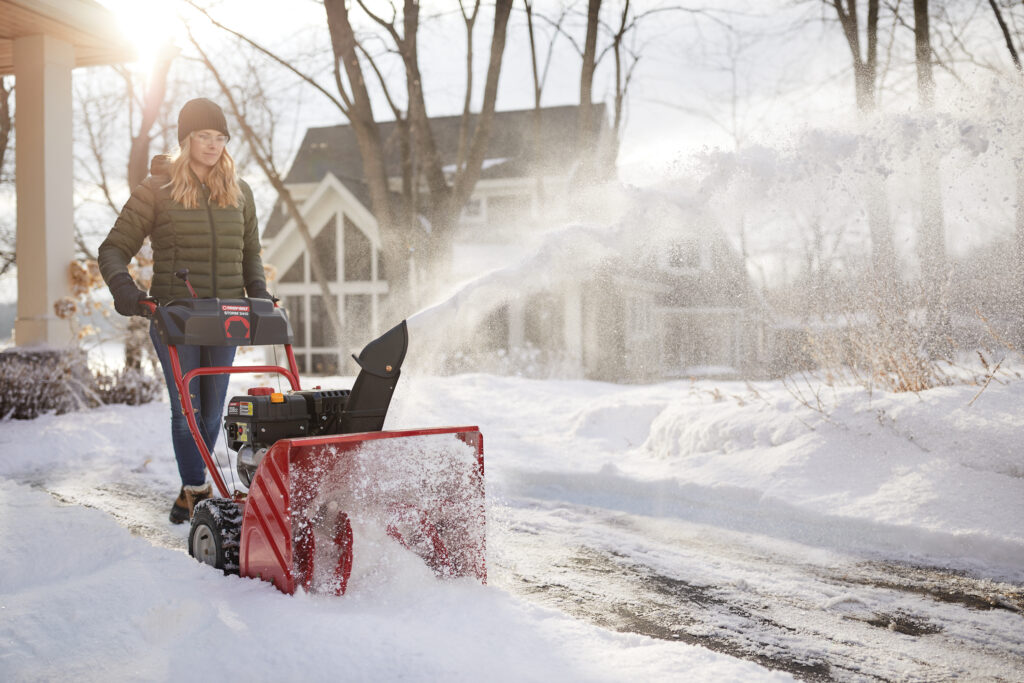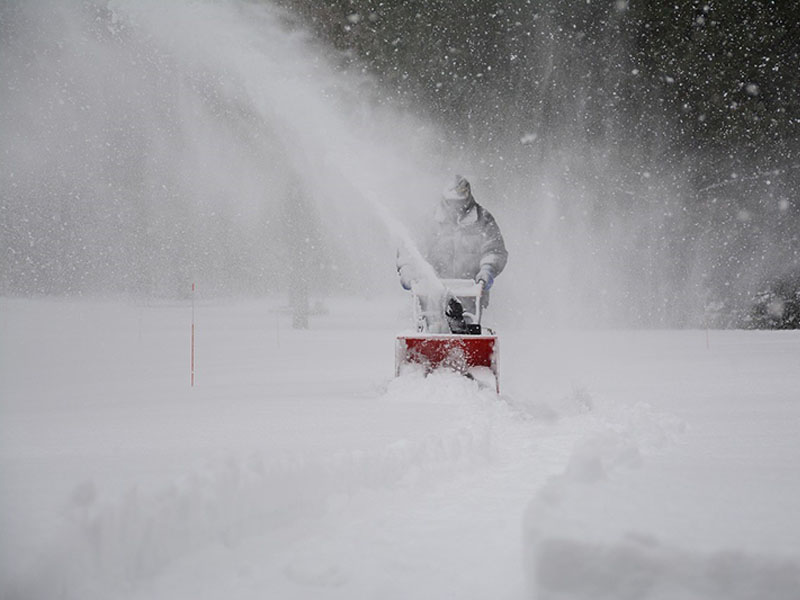So you woke up this morning to find a thick blanket of snow covering your driveway and sidewalk. The thought of spending hours shoveling fills you with dread, but fear not! There are different types of snowblowers that can make your life much easier. From single-stage snowblowers to two-stage and three-stage models, each one has its own unique features and benefits. In this article, we will explore the different types of snowblowers available in the market, helping you make an informed decision on which one is the right fit for your snow-clearing needs.

Single-Stage Snowblowers
Compact and Light
Single-stage snowblowers are compact and lightweight machines that are designed for small to medium areas. They are perfect for homeowners with limited storage space as they take up minimal room in your garage or shed. These snowblowers are also easy to maneuver, making them a great option for those who may have difficulty handling larger and heavier equipment.
Suitable for Small to Medium Areas
If you have a small driveway or walkway to clear, a single-stage snowblower is an excellent choice. These machines are specifically designed for clearing snow in smaller areas, such as sidewalks, small driveways, and patios. They are efficient at removing snow from these spaces without taking up too much time or effort.
Ideal for Light Snow Depths
Single-stage snowblowers are best suited for light snowfalls. They typically have a clearing depth of around 6-8 inches, making them perfect for dustings or smaller accumulations of snow. If you live in an area where heavy snowfall is infrequent, a single-stage snowblower can efficiently handle the job.
Auger-Driven Operation
One of the key features of a single-stage snowblower is its auger-driven operation. The auger is the rotating blade located at the front of the machine that scoops up the snow and throws it out of the chute. The auger on a single-stage snowblower makes direct contact with the ground, helping to propel the machine forward as it clears the snow.
Limited Clearing Width
While single-stage snowblowers excel in maneuverability, they do have a limited clearing width. Typically, these machines have a clearing width of around 18 to 22 inches. While this width is sufficient for smaller areas, it may require more passes to clear a larger driveway or parking lot.
Noisy Operation
One downside of single-stage snowblowers is their noisy operation. Due to their design and auger-driven mechanism, these machines can be quite loud when in use. If noise is a concern for you, it’s worth considering other options that offer quieter operation.
Not Suitable for Gravel Surfaces
Single-stage snowblowers are not recommended for use on gravel surfaces. The auger on these machines makes direct contact with the ground, which can cause the auger to pick up and throw gravel along with the snow. This can damage the machine and pose a safety risk. If you have a gravel driveway or pathway, it’s best to explore other types of snowblowers.
Two-Stage Snowblowers
Powerful and Efficient
Two-stage snowblowers are known for their power and efficiency. These machines are designed to tackle larger areas and more significant snow accumulations. If you often deal with heavy snowfall or have a large property to clear, a two-stage snowblower is an excellent choice.
Suitable for Large Areas
Two-stage snowblowers are specifically designed for clearing snow in larger areas. Whether you have a long driveway, a large parking lot, or a wide sidewalk to clear, a two-stage snowblower can handle the job efficiently. These machines have a wider clearing width and can make fewer passes to clear a large area.
Ideal for Heavy Snow Depths
If you live in an area that frequently experiences heavy snowfalls, a two-stage snowblower is your best bet. These machines have the power and capacity to handle significant snow accumulations, making them a great investment for those who need to consistently clear deep and heavy snow.
Auger and Impeller-Driven Operation
Unlike single-stage snowblowers, two-stage snowblowers utilize both an auger and an impeller for clearing snow. The auger is responsible for scooping up the snow, while the impeller helps to propel and throw the snow out of the chute. This two-stage process allows for greater throwing distances and increased efficiency in clearing snow.
Increased Clearing Width
One of the advantages of a two-stage snowblower is its wider clearing width. These machines typically have a clearing width ranging from 24 to 30 inches or more. With a wider cutting path, you’ll be able to clear larger areas in less time, making snow removal a breeze.
Ability to Clear Gravel Surfaces
Two-stage snowblowers are well-suited for clearing snow on gravel surfaces. Unlike single-stage snowblowers, the auger on a two-stage machine does not make direct contact with the ground. This helps prevent gravel or other debris from being thrown along with the snow, minimizing potential damage to the machine.
Less Noisy Operation
Compared to single-stage snowblowers, two-stage models tend to have quieter operation. The additional components, such as the impeller, help reduce noise levels. This can be beneficial if you have noise restrictions in your area or if you generally prefer quieter equipment.
Three-Stage Snowblowers
Highly Efficient and Powerful
Three-stage snowblowers are the most efficient and powerful option when it comes to snow removal. These machines are built to handle heavy snowfalls and are perfect for clearing large areas quickly and effectively.
Suitable for Large Areas and Heavy Snowfalls
If you have a large property or frequently deal with heavy snowfalls, a three-stage snowblower is your best choice. These machines can clear snow in wide areas, making them ideal for spacious driveways, parking lots, and other expansive spaces.
Ideal for Wet and Compacted Snow
Three-stage snowblowers are specifically designed to handle wet and compacted snow. The added accelerator component in these machines helps break up dense snow and ice, allowing for easier clearing. If you often encounter wet and heavy snow, a three-stage snowblower will be a reliable and efficient option.
Auger, Impeller, and Accelerator-Driven Operation
Three-stage snowblowers incorporate an auger, impeller, and accelerator in their operation. The auger scoops up the snow, the impeller propels it through the chute, and the accelerator further breaks down the snow for enhanced throwing ability. This triple-stage operation ensures superior performance and efficiency.
Widest Clearing Width
In terms of clearing width, three-stage snowblowers outshine other types. These machines typically have a clearing width of 32 inches or more, allowing you to clear large areas in a single pass. If time is of the essence and you need to clear snow quickly, a three-stage snowblower will save you valuable time and effort.
Ability to Clear Gravel Surfaces
Like two-stage snowblowers, three-stage models are also capable of clearing snow on gravel surfaces. The design of these machines prevents the auger from making direct contact with the ground, reducing the risk of throwing gravel and causing damage.
Less Noisy Operation
Despite their power and efficiency, three-stage snowblowers tend to have less noisy operation compared to their single-stage counterparts. This can be attributed to the smoother and more balanced operation of the three-stage system, making these machines a suitable option for those who prefer quieter equipment.
Electric Snowblowers
Suitable for Small to Medium Areas
Electric snowblowers are a great choice for clearing snow in small to medium-sized areas. If you have a small driveway or walkway to clear, these machines are efficient and practical.
Environmentally Friendly
One of the significant advantages of electric snowblowers is their environmental friendliness. Unlike gas-powered snowblowers, electric models do not generate harmful emissions or contribute to air pollution. If you’re conscious of your carbon footprint and want an eco-friendly option, electric snowblowers are the way to go.
Lightweight and Easy to Maneuver
Electric snowblowers are designed to be lightweight and easy to maneuver. With no heavy gas engine to contend with, these machines are usually more manageable and require less physical effort to operate. This makes them an excellent choice for individuals who may have difficulty handling heavier equipment.
Limited Clearing Width
One limitation of electric snowblowers is their limited clearing width. These machines typically have a narrower cutting path compared to gas-powered models, ranging from 16 to 20 inches. While this is sufficient for small to medium areas, it may require more passes to clear larger spaces.
Corded and Cordless Options
There are two types of electric snowblowers: corded and cordless. Corded models require an electrical outlet and a power cord, offering unlimited runtime without the need for recharging. On the other hand, cordless models are powered by rechargeable batteries, providing greater portability and eliminating the need for a power cord.
Lower Maintenance Requirements
Electric snowblowers have lower maintenance requirements compared to gas-powered models. Since they don’t require fuel or oil changes, there’s minimal maintenance involved. However, it’s essential to keep the machine clean and free of debris to ensure optimal performance.
Less Noisy Operation
Electric snowblowers are known for their quiet operation. Without a gas engine, these machines produce minimal noise, making them a great option for noise-sensitive areas or early morning snow removal.

Gas-Powered Snowblowers
Suitable for Medium to Large Areas
Gas-powered snowblowers are designed to handle snow removal in medium to large areas. If you have a long driveway, a large parking lot, or a vast property to clear, a gas-powered snowblower is the most suitable option.
More Powerful and Heavy-Duty
Compared to electric snowblowers, gas-powered models are more powerful and heavy-duty. They typically have larger engines and robust components, allowing them to tackle deeper snow accumulations and heavy, wet snow with ease.
Ideal for Tough Snow Conditions
If you live in an area with extreme winter conditions, such as heavy snow, ice, or icy snow mixtures, a gas-powered snowblower is your best bet. These machines have the ability to plow through tough snow conditions, ensuring you can quickly and effectively clear your property.
Auger and Impeller-Driven Operation
Similar to two-stage and three-stage snowblowers, gas-powered snowblowers utilize both an auger and an impeller for snow clearing. The auger scoops up the snow, while the impeller helps propel it through the chute, allowing for efficient snow removal.
Increased Clearing Width
Gas-powered snowblowers generally have a wider clearing width compared to electric models. The cutting path of these machines can range from 22 to 30 inches or more, allowing you to clear larger areas in fewer passes.
Various Engine Sizes
Gas-powered snowblowers come in different engine sizes, ranging from smaller engines for lighter-duty tasks to more substantial engines for heavy-duty snow removal. The engine size you choose will depend on the size of your property, the average snowfall in your area, and the type of snow conditions you typically encounter.
Requires Fuel and Regular Maintenance
One consideration for gas-powered snowblowers is the need for fuel and regular maintenance. These machines run on gasoline, so they require fueling before each use. Additionally, they need regular maintenance, including oil changes, spark plug replacements, and air filter cleaning or replacement.
Track-Driven Snowblowers
Enhanced Traction and Stability
Track-driven snowblowers are known for their enhanced traction and stability. Instead of wheels, these machines utilize tracks, similar to those found on tanks, to move across snow-covered surfaces. The tracks provide superior grip, allowing for smoother and more stable operation.
Ideal for Uneven or Sloped Terrain
If you have uneven or sloped terrain, a track-driven snowblower is the perfect choice. The tracks make it easier to maneuver in challenging conditions, ensuring that the machine stays stable and won’t slide or tip on hills or uneven surfaces.
Suitable for Any Snow Depth
Track-driven snowblowers are designed to handle snow of any depth. Whether you’re dealing with light dustings or heavy snowfalls, these machines have the power and capability to clear the snow effectively.
Auger and Impeller-Driven Operation
Similar to two-stage and three-stage snowblowers, track-driven models operate with an auger and an impeller. The auger scoops up the snow, while the impeller propels it through the chute, ensuring efficient and thorough snow removal.
Increased Clearing Width
Track-driven snowblowers generally have an increased clearing width compared to other types. With cutting paths ranging from 24 to 30 inches or more, you can clear wider areas in less time, allowing you to cover significant ground quickly.
Ability to Clear Gravel Surfaces
Track-driven snowblowers are suitable for clearing snow on gravel surfaces. The tracks provide stability and avoid making direct contact with the ground, preventing gravel from being picked up and thrown along with the snow.
Requires Track Maintenance
It’s important to note that track-driven snowblowers require regular track maintenance. The tracks can become worn or damaged over time, so it’s essential to inspect and replace any worn components to ensure optimal performance.
Single-Handed Snowblowers
Compact and Lightweight
Single-handed snowblowers are compact and lightweight machines that are designed to be operated with one hand. They are perfect for clearing snow in small areas or on sidewalks where maneuverability is essential.
Suitable for Small Areas and Sidewalks
If you have a small area or sidewalks to clear, a single-handed snowblower is a convenient option. These machines excel in maneuverability, allowing you to navigate tight spaces and maintain control while removing snow.
Auger-Driven Operation
Single-handed snowblowers feature an auger-driven operation. The auger scoops up the snow and throws it out of the chute, ensuring efficient snow clearing in a one-handed design.
Limited Clearing Width
One limitation of single-handed snowblowers is their limited clearing width. Due to their compact size, these machines typically have a clearing width of around 12 to 18 inches. While this might mean more passes to clear larger areas, it makes them perfect for small spaces.
Allows for One-Handed Operation
As the name suggests, single-handed snowblowers can be operated with just one hand. This can be particularly beneficial for individuals who have limited mobility or strength, allowing them to clear snow with ease.
Convenient for Elderly or Individuals with Limited Mobility
Single-handed snowblowers are a great option for elderly individuals or those with limited mobility. Their lightweight design and one-handed operation make them easy to handle, ensuring that snow removal is both convenient and accessible.
Not Suitable for Large Areas
While single-handed snowblowers offer convenience and maneuverability, they are not suitable for clearing large areas. Their limited clearing width and smaller capacity make them inefficient for larger driveways or significant snow accumulations.
Attachment Snowblowers
Designed for Tractors or ATV/UTV
Attachment snowblowers are specifically designed to be used with tractors or ATV/UTV vehicles. These snowblowers are not standalone machines but rather attachments that can be mounted onto compatible vehicles.
Suitable for Large Areas
If you have a large area to clear, an attachment snowblower is an excellent choice. These machines are perfect for commercial use or for homeowners with large properties that require efficient and thorough snow removal.
Requires Vehicle Movability
Since attachment snowblowers require a tractor or ATV/UTV for operation, it’s important to have a vehicle that is capable of moving the attachment. This makes them less suitable for individuals without access to these types of vehicles.
Auger and Impeller-Driven Operation
Attachment snowblowers operate using an auger and an impeller, similar to other two-stage snowblowers. The auger collects the snow, while the impeller moves it through the chute, ensuring effective snow clearing.
Increased Clearing Width
Attachment snowblowers typically have a wide clearing width, ranging from 60 to 84 inches or more. With such a broad cutting path, you can clear massive areas in no time, making them the perfect choice for large-scale snow removal.
Ideal for Snow Removal in Open Areas
If you have open areas to clear, such as parking lots or expansive driveways, attachment snowblowers are the most efficient option. Their wide clearing width and ability to be mounted onto vehicles allow for quick and thorough snow removal.
Requires Compatibility and Attachment Installation
It’s important to ensure compatibility between the attachment snowblower and your vehicle. Additionally, the attachment must be properly installed and secured onto the vehicle to ensure safe and effective operation.
Power Shovel Snowblowers
Lightweight and Portable
Power shovel snowblowers are lightweight and portable machines that are perfect for small areas and walkways. These compact snowblowers are easy to handle and maneuver, making them a convenient option for quick snow removal.
Suitable for Small Areas and Walkways
Power shovel snowblowers are designed for small areas and walkways where a larger snowblower may be impractical or difficult to navigate. If you have a patio, porch, or small driveway to clear, a power shovel snowblower is an efficient choice.
Auger-Driven Operation
These snowblowers feature an auger-driven operation, wherein the auger scoops up the snow and throws it out of the chute. The compact size and single-stage design of power shovel snowblowers make them efficient at removing light snow accumulations.
Limited Clearing Width
Due to their compact size, power shovel snowblowers have a limited clearing width. The cutting path typically ranges from 10 to 14 inches, allowing for targeted snow removal in tight spaces.
Easy to Maneuver and Store
One of the advantages of power shovel snowblowers is their ease of maneuverability and storage. These machines are lightweight and generally smaller in size, allowing you to easily navigate around obstacles and store them in tight spaces, such as a garage or shed.
Ideal for Light Snow Removal
Power shovel snowblowers are best suited for light snow removal. If you experience frequent light snowfalls or need to clear a light dusting quickly, a power shovel snowblower will efficiently get the job done.
Not Suitable for Deep Snow or Large Areas
While power shovel snowblowers are excellent for small areas and light snow, they are not suitable for deep snow or larger areas. Their limited clearing width and capacity make them inefficient for heavy snowfall or expansive spaces.
Hybrid Snowblowers
Combines Electric and Gas Power
Hybrid snowblowers combine the power of a gas engine with the convenience of an electric motor. These machines offer the best of both worlds, making them suitable for medium to large areas with heavy-duty snow removal needs.
Suitable for Medium to Large Areas
Hybrid snowblowers are designed to handle snow removal in medium to large areas. Whether you have a long driveway or a large commercial property, these machines have the power and capability to clear significant snow accumulations.
Ideal for Heavy-Duty Snow Removal
If you frequently deal with heavy-duty snow removal, a hybrid snowblower is your ideal solution. These machines are built to handle tough snow conditions, making them efficient and reliable in the harshest winter weather.
Auger and Impeller-Driven Operation
Hybrid snowblowers operate using both an auger and an impeller, similar to other two-stage snowblowers. The auger collects the snow, while the impeller propels it through the chute, ensuring effective and efficient snow clearing.
Increased Clearing Width
Like other gas-powered snowblowers, hybrids typically have a wider clearing width than their electric counterparts. With clearing widths ranging from 24 to 30 inches or more, you can clear larger areas in fewer passes.
Offers Fuel Efficiency and User Convenience
One of the notable advantages of hybrid snowblowers is their fuel efficiency and user convenience. The electric motor provides the convenience of push-button start and eliminates the need for gas/oil mixing, while the gas engine provides the power needed for heavy-duty snow removal.
Requires Fuel and Regular Maintenance
It’s important to note that hybrid snowblowers still require fuel and regular maintenance, similar to gas-powered models. While they offer fuel efficiency, you will still need to ensure you have a sufficient fuel supply and perform regular maintenance tasks to keep the machine running smoothly.

